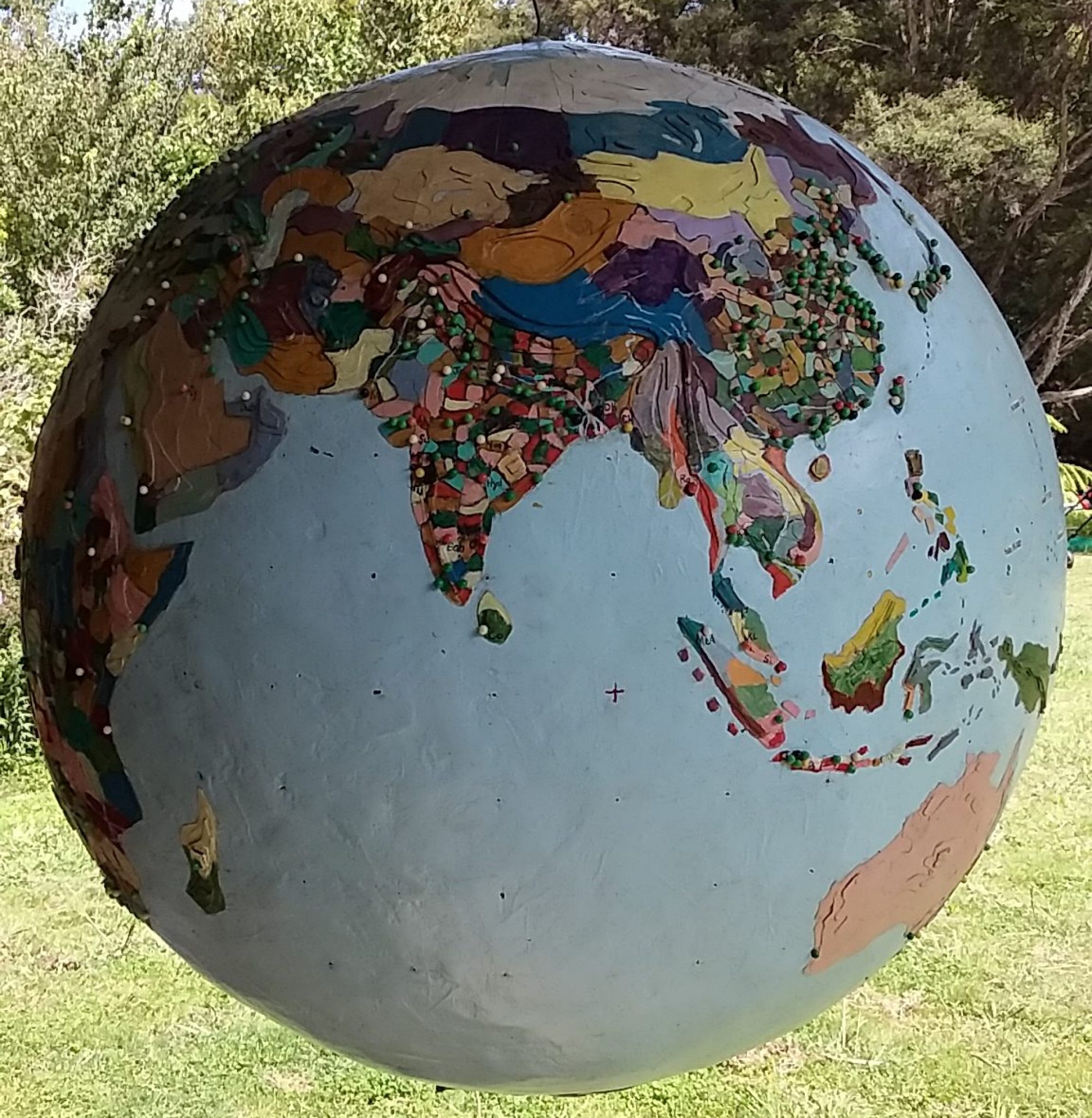Bandundu
Millisphere (noun): a discrete region inhabited by roughly 1000th of the total world population.
When Sam Manzanza played the Musicians Club I quizzed him about the millisphere of Bandundu. Soukous music, a speeded up Congolese version of Caribbean rumba and samba rhythms, has become popular in the Congo since Sam left Kinshasa. In 2000 the government tried to ban soukous because of its sexually explicit dancing.
The Democratic Republic of the Congo (DRC) consists of ten millispheres and including the one Congo (Brazzaville) millisphere on the north side of the river there are roughly eleven millispheres covering the watershed of the Congo.
The Congo is the second longest river in Africa and the world’s second largest river by water discharge. The coastal millisphere of Atlantic Congo contains the non navigable section of the river and the port of Matadi is connect to the DRC capital, Kinshasa, by road and rail.
Kinshasa (11 million), the third largest African city, after Cairo and Lagos, is a millisphere in itself. According to Mike Davis in Planet of Slums, Kinshasa’s infrastructure has been in decline since the Belgians left in 1963. “The Belgians took twenty percent for themselves and put eighty percent into the government and infrastructure; after independence the new leaders took seventy percent for themselves,” said Sam who moved to Kinshasa in the late sixties.
Sam had been born by Lake Mai-Ndombe (Black water) in the time of the Belgian Congo. Mai-Ndombe is part of the old Bandundu province (eight million), above the Stanley Pools, where the Congo becomes navigable and the Kasai and Kwango rivers branch off. Bandundu is Kinshasa’s hinterland – but still in the lower Congo and there are another seven millispheres further upriver.
The Congo has many languages, and, before learning French and English, Sam spoke Lingala which is spoken by about 8 million people living upriver from Kinshasa and it is also the language used by the DRC army. Sam said in the country everything grew and there was no problem with food, but having no money to buy essentials, like medicine, sent people down the river to the city to look for work.
In the late nineteenth century, during the first thirty years of Belgian rule by King Leopold II, the population had dropped by a third. In 1961, when the DRC achieved independence, there were 13.5 million Africans and 100,000 whites; today the DRC has a population approaching 80 million and has one of the ten fastest growing populations in the world.
The Congolese independence movement came from the intellectuals in Kinshasa and Belgian mining interests were quick to help the breakaway province of Katanga, at the top of Congo watershed, in its bid for its own independence. During the Katanga conflict Patrice Lumumba, the country’s first president, was shot by Belgian mercenaries (backed by the CIA) protecting western mining interests.
In the late 1990s the ethnic conflict in Rwanda spilled over into the DRC claiming as many as five million casualties (mostly civilians) as the army, warlords and ethnic militia fought for control of DRC’s mineral-rich eastern regions. As well as being rich in diamonds, gold, copper, cobalt, manganese, tin and uranium the DRC has eighty percent of the world’s clotan, a semiconductor used in computer electronics. “Paul Kagame (president of Rwanda and now head of the African Union) is a criminal, stealing the Congo’s minerals,” said Sam.
In the First World War copper from the Congo was used to made the brass shell casings for both sides. The uranium in the nuclear bombs dropped on Nagasaki and Hiroshima in the Second World War came from a mine in southeast Congo. Nothing much has changed since the days of the Belgian Congo; with global mining interests, working with a small corrupt local elite, backed by the military and ethnic militia controlling production.
“The first will last and the last will be first,” said Sam as we discussed why a country blessed with so much abundance should be so poor and had the bloodiest conflict since the second world war. “Africa’s World War,” was a conflict for the control of minerals sought after by global corporates and arms manufacturers.
